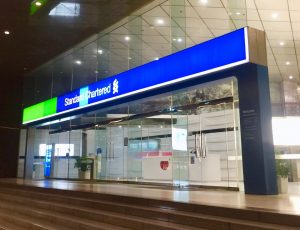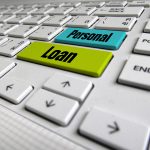Standard Chartered Bank and UOB provide HKD 5.29 billion (S$9.05 million) green loan to Gaw Capital-led consortium

Standard Chartered Bank (Hong Kong) Limited (“SCBHK”) and UOB have teamed up to provide a HKD 5.29 billion ($682.42 million) green loan to a Gaw Capital Partners-led consortium to support its acquisition of 1111 King’s Road (previously named as Cityplaza One) in Hong Kong.
1111 King’s Road currently holds a Platinum Green Building Certification under the BEAM Plus1 assessment scheme which is recognised and accredited by the Hong Kong Green Building Council. The platinum certification is the highest possible rating based on a basket of criteria2 including water efficiency and waste management. It recognises buildings with sustainability incorporated into their design and operation, and which contribute positively to Hong Kong’s emission intensity reduction goals.
Standard Chartered Bank Hong Kong and UOB acted as joint mandated lead arrangers and joint bookrunners for the green loan facility to the Gaw Capital Partners-led consortium. The loan supports Gaw Capital’s continued efforts in implementing its sustainable strategy in line with the United Nations’ Sustainability Development Goals.
Ms Helen Hui, Co-Head, Client Coverage, Corporate, Commercial and Institutional Banking, Hong Kong, Standard Chartered, said, “Standard Chartered is fully committed to promoting sustainable finance and embedding sustainability in our business operations.”
“We are pleased to provide this green loan to the Gaw Capital Partners-led consortium for the purchase of 1111 King’s Road and installation of more green facilities in this Grade-A office tower. We are keen to do more and seek opportunities to work with our clients in developing Hong Kong into a hub for green finance.”
Mrs Christine Ip, CEO – Greater China, UOB, said, “At UOB, financing is one way we partner our clients to promote sustainable development. Our support to the consortium led by Gaw Capital Partners demonstrates our commitment to working with our clients to help drive their sustainability efforts as we continue to forge a sustainable future with our stakeholders.”
Ms Christina Gaw, Managing Principal & Head of Capital Markets of Gaw Capital Partners, said, “Gaw Capital Partners has continued to integrate ESG considerations into our business since 2014. With our latest purchase in Hong Kong, we are committed to maintaining 1111 King’s Road, Hong Kong under Platinum BEAM Plus accreditation, which means that the building will reduce the environmental impact in terms of different aspects, including operation management, materials and waste aspect, energy use, water use and indoor environment quality. This green loan reflects our commitment in finding ways to finance and operate a more sustainable business.”
Green lending refers to a lending dependent on environmental criteria for the planned use of funds. It is part of the wider sustainable investing and aims to reduce the impact on the environment of new lending activities.
Starting in 2005 major US banks such as Wells Fargo (July 2005, $1bn over 5 years) and Bank of America (March 2007, $20 bn) started dedicating financing toward sustainable entrepreneurship. This usually meant financing the building of environmentally sustainable or friendly buildings or enterprises. The green lending initiative appear to have been taken by the lenders as opposed to borrowers.
In 2018 the Loan Market Association in the UK issued Green Loan Principles to ensure any green loan is used for eligible green projects. This includes stating that this must be clearly articulated in the finance documents along with the expected environmental benefits, which must be assessed, quantified, measured and reported by the borrower.[4] The list of projects that qualify as green is based on the list that the International Capital Market Association uses to define Green Bonds.
In April 2017, ING Group issued the world’s first sustainability-linked loan to Philips, coupling the interest rate of the EUR 1 billion loan to the company’s sustainability performance. By June 2018, Bloomberg News reported that ING Group had closed 15 similar deals where the bank would lower the cost of borrowing by between 5% and 10% based on the company’s ESG rating provided by Sustainalytics. As shown on Environmental Finance’s list of sustainability loans, several other banks have teamed with various ESG ratings agencies, copying and building on the ING-Sustainalytics model.
In September 2018, five banks, including BBVA, structured a revolving credit facility (RCF) for the Italian power utility A2A in a finance deal valued at 400 million euros. The syndicated loan avails itself of a margin mechanism based on two parameters: the performance of two selected KPIs (waste processing capacity and the volume of renewable energy sold in the wholesale market, emphasizing the focus of the A2A Group on the circular economy and decarbonation). The solicited ESG rating is provided annually by Standard Ethics Aei.
The green economy is defined as economy that aims at making issues of reducing environmental risks and ecological scarcities, and that aims for sustainable development without degrading the environment. It is closely related with ecological economics, but has a more politically applied focus.
The 2011 UNEP Green Economy Report argues “that to be green, an economy must not only be efficient, but also fair. Fairness implies recognizing global and country level equity dimensions, particularly in assuring a Just Transition to an economy that is low-carbon, resource efficient, and socially inclusive.”
A feature distinguishing it from prior economic regimes is the direct valuation of natural capital and ecological services as having economic value (see The Economics of Ecosystems and Biodiversity and Bank of Natural Capital) and a full cost accounting regime in which costs externalized onto society via ecosystems are reliably traced back to, and accounted for as liabilities of, the entity that does the harm or neglects an asset.






